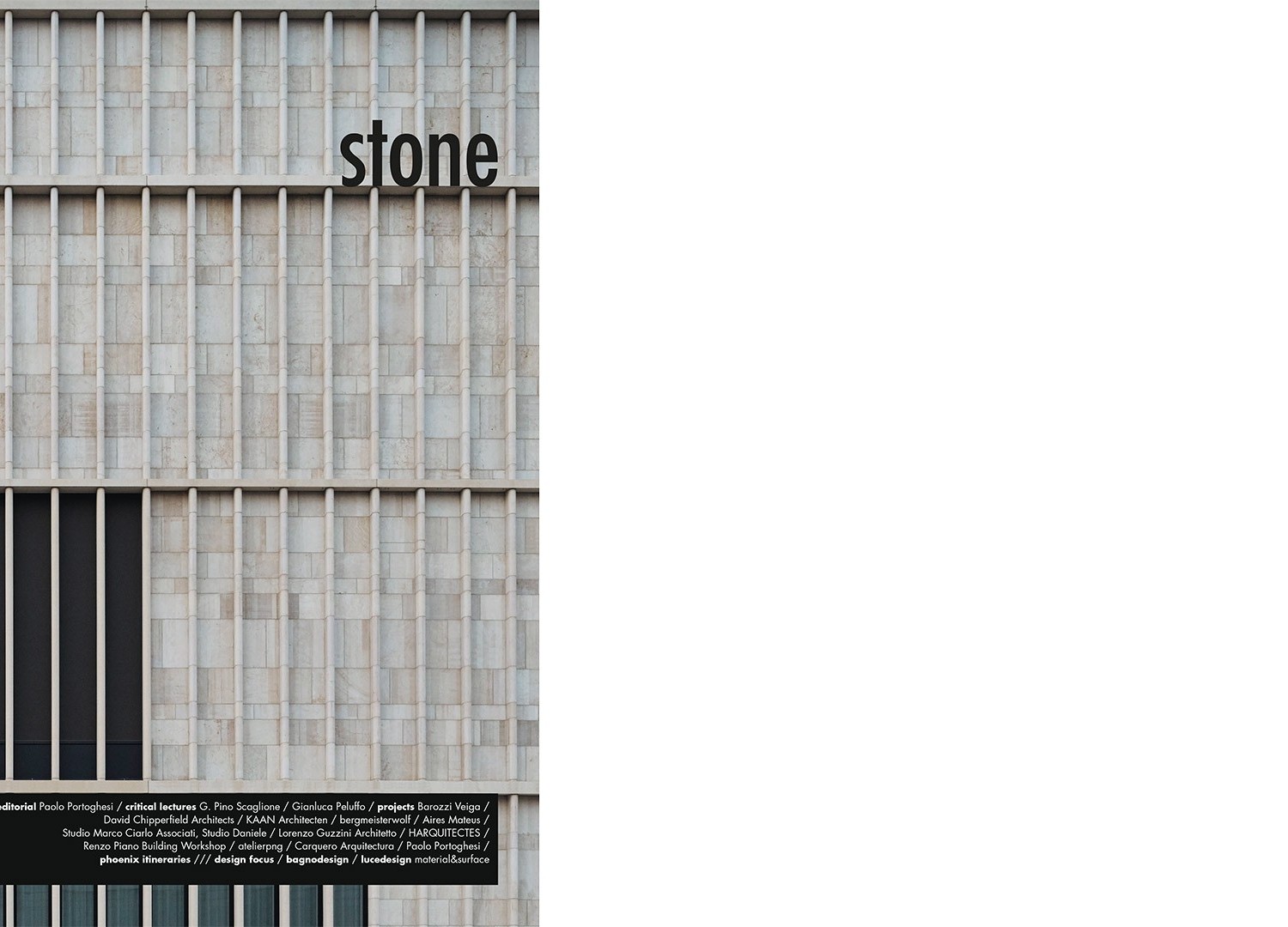
International magazine of architecture and project design september/october 2021
The immortality of stone
Every architect has a dream, an idea that returns to his or her mind without ever abandoning it. Mine is very simple: to have the opportunity to erect a building of purely stone or marble in large blocks and thicknesses. The reasons are multiple, and in the list of these it will be possible to understand the value of the material in relation to thought and the intellectual construction of the work.
Duration. A material that lasts longer than stone does not exist in nature, nor can it be manufactured, and as every architect seeks the immortality denied to himself, he can find it at least in his works through the use of materials that have proven their resistance over thousands of years. This feeling of power and strength over time is reflected in the enormous variety of examples in the austere mass of Palazzo Vecchio in Florence, masterfully shaped by Arnolfo di Cambio now well over seven hundred years ago. Continuity. Furthermore, if we understand the importance of preserving resources in the act of building, we understand how in the use of local stone we discover a spontaneous conjunction between building and soil, between artifice and nature. An easily explainable mystery that masterfully links architecture to the landscape of which it becomes an integral part due to the obvious transmigration of matter. Uniqueness. There is no doubt in this regard that through stone it is possible to reach that rhetorical image represented when there is a material that allows in its massiveness the maximum of thermal inertia and protection and if treated and sculpted, it becomes support and at the same time decoration, structure and ornament. Accuracy and spontaneity. In the use of stone, both extremes of building are allowed, the opportunity of assembling pieces or parts previously sculpted and cut according to the most perfect rules of stereometry for which building becomes a very high definition assembly work, or the sapient dry joint; or through mortars of a wall design that is produced naturally and independently according to a randomness as poetic as it is vibrant. Plasticity. And it is in this dimension that architecture and art interpenetrate, allowing buildings to become habitable sculptures, an opportunity given by the possibility of designing and sculpting the quarried blocks to make them part of an overall design or the opportunity to combine small parts, moulding them in order to reach the desired shape and spaces, arches, vaults, complex or simply straight figures. Infinite variety. Stone, according to a generalized meaning that associates any stone material under this name, be it travertine, marble, granite, sedimentary rock or sandstone, allows you to choose textures, colours and ultimately finishes and processes, so vast and differentiated as to make endless possibilities given to the designer in the use of this noble material and thereby allow the very essence of his/her technical and creative work in the composition to be fulfilled for the architect, through stone.
Marco Casamonti
Download cover
Download table of contents
Download introduction of Marco Casamonti


